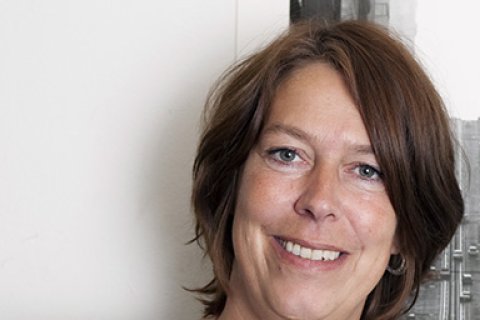“Children of divorced parents are small city nomads”
Dr. Irina van Aalst about 'Where do I belong? Children in multi-resident families
“Two homes mean two distinct environments. This is the reality for many children of divorced parents. So where do they feel at home?” Dr Irina van Aalst is a researcher for the theme ‘Where do I belong?’ of Dynamics of Youth. As an urban geographer, she accounts for the geographical, spatial aspect.
The study ‘Where do I belong?’ looks at children with divorced parents who grow up in two different homes. Which factors affect the question of where they feel at home? Does a divorce have less of an impact if the parents live near each other?

Football team
For example, if children live too far away from their football club every other week due to a divorce, missing every second match may mean that they can no longer perform well on the team. Sports clubs, but also municipalities and neighbourhood organisations that work with children, are very much interested in such effects of living at a considerable distance, says Van Aalst.
Temporary accommodation
In addition, housing associations and municipalities find it important to know the distance between the two homes in which a child grows up. If this distance is at a risk of becoming very substantial for many children, housing associations and municipalities can decide to build or to offer temporary accommodation closer to where the other parent lives. This is already happening in Amsterdam, according to Van Aalst. As the study’s social applicability is highly relevant, the researchers collaborate with parties including the Municipality of Utrecht and youth welfare organisations. They also receive a lot of input from young people who, through Villa Pinedo, help other young people cope with divorce-related problems based on their own experience.
Young people use the city as their place to grow up.
The child’s perspective
Says Van Aalst: “The child’s or adolescent’s perspective is always key to my research. When studying the nightlife of 16- to 25-year-olds, I was captivated by the ways young people make use of the city. They use the city as their environment in which to grow up.” Next, she expanded her interest to include younger groups. ‘Where do I belong?’ involves children aged 12 to 18.

Solutions by children
At Dynamics of Youth, the researchers are taking an innovative approach in another way as well. “In many studies of young people, children are the informants: they provide information about their situation. At Dynamics of Youth, we also want to make use of solutions suggested by children for the social issues we study. For example, together with ConsultingKids, we asked pupils from the two highest years of primary school why children spend less and less time playing outdoors. We want to incorporate their solutions into scientific studies. So far, this has not been done often in the academic world.”
The researchers will follow 250 separate families throughout the Netherlands.
250 families
The researchers will be monitoring 250 divorced families living across the Netherlands. This research team have made an appeal to parents and children to participate. Families in which at least one parent and one child participate fill in a questionnaire at the outset, then twice more at nine-month intervals. The children are also interviewed by Van Aalst and her colleagues in the fields of social and behavioural sciences, law, linguistics as well as computer science. In this way, the researchers hope to gain more insight into the issues that children face following a divorce. “Children of divorced parents become small city nomads: they constantly travel up and down with their belongings.”
Perspectives
Studies that seek to learn how children feel at home are greatly helped by knowledge from a variety of perspectives. Social geographers are used to collaborating across disciplines, says Van Aalst. “We always look at the spatial aspect, but also at how a situation or an environment intrinsically affects people, in this case children. Combining perspectives in this way gives us the most complete profile of a child possible. By bringing together various research methods and disciplines, we generate more knowledge as well.”
RESEARCH THEME YOUTH
If you want to tackle social problems, you can best start with children. The Utrecht research theme Dynamics of Youth invests in a resilient youth. Scientists from all disciplines work together to better understand children's development. How do we help children and young people grow and prosper in our rapidly changing society?
Dr. Irina van Aalst is stadsgeograaf bij de faculteit Geowetenschappen van de Universiteit Utrecht. Haar onderzoek bevindt zich op het snijvlak van de stads-, economische en culturele geografie. Ze publiceert over stedelijke dynamiek en cultuur, de openbare ruimte, jeugd, de creatieve industrie, het nachtleven en de stad New York.
Read more:
- Bitter divorces have limited influence on quality of children’s lives
4 questions to relationship researcher Catrin Finkenauer: ''Relationships are work, and not always fun”
A divorced couple lives more than 50 minutes apart. What effect does this have on their children?

